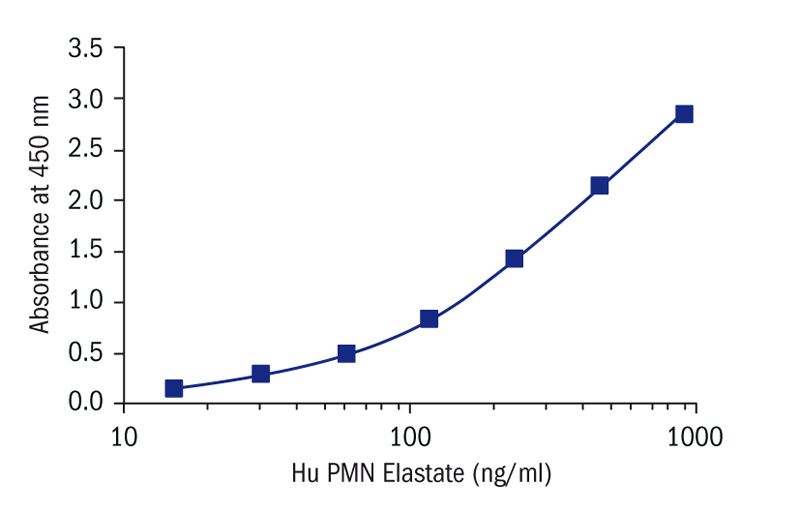Type
Sandwich ELISA, HRP-labelled antibody
Description
The test kit is a solid phase enzyme-linked immunosorbent assay (ELISA) in the microplate format, designed for the quantitative measurement of the complex of human PMN Elastase and α1-proteinase inhibitor (α1-PI) in blood plasma and seminal plasma. The microplate is coated with a polyclonal antibody directed against human PMN Elastase (antigen).
Applications
Plasma-EDTA, Plasma-Citrate, Seminal plasma
Sample Requirements
10 µl/well
Shipping
On blue ice packs. Upon receipt, store the product at the temperature recommended below.
Storage/Expiration
Store the kit at 2–8°C. Storage conditions for aliquots of Standards, Quality Controls and samples are – 20°C. Shelf life of components is 30 days after opening or until the expiration date.
Calibration Curve
Calibration Range
0.16 –10 ng/ml
Limit of Detection
0.03 ng/ml

